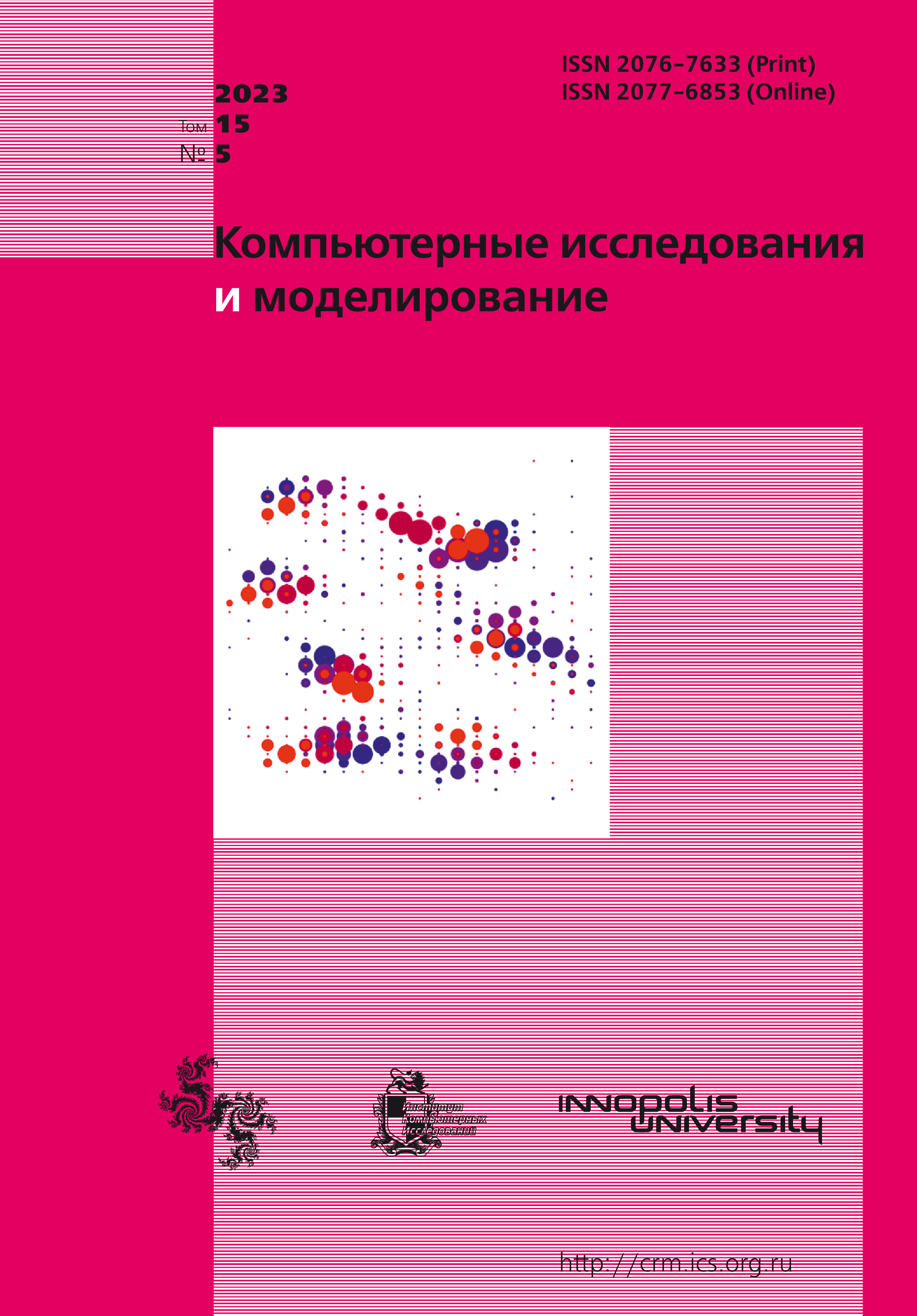All issues
- 2025 Vol. 17
- 2024 Vol. 16
- 2023 Vol. 15
- 2022 Vol. 14
- 2021 Vol. 13
- 2020 Vol. 12
- 2019 Vol. 11
- 2018 Vol. 10
- 2017 Vol. 9
- 2016 Vol. 8
- 2015 Vol. 7
- 2014 Vol. 6
- 2013 Vol. 5
- 2012 Vol. 4
- 2011 Vol. 3
- 2010 Vol. 2
- 2009 Vol. 1
Motion control by a highly maneuverable mobile robot in the task of following an object
 pdf (1932K)
pdf (1932K)
This article is devoted to the development of an algorithm for trajectory control of a highly maneuverable four-wheeled robotic transport platform equipped with mecanum wheels, in order to organize its movement behind some moving object. The calculation of the kinematic ratios of this platform in a fixed coordinate system is presented, which is necessary to determine the angular velocities of the robot wheels depending on a given velocity vector. An algorithm has been developed for the robot to follow a mobile object on a plane without obstacles based on the use of a modified chase method using different types of control functions. The chase method consists in the fact that the velocity vector of the geometric center of the platform is co-directed with the vector connecting the geometric center of the platform and the moving object. Two types of control functions are implemented: piecewise and constant. The piecewise function means control with switching modes depending on the distance from the robot to the target. The main feature of the piecewise function is a smooth change in the robot’s speed. Also, the control functions are divided according to the nature of behavior when the robot approaches the target. When using one of the piecewise functions, the robot’s movement slows down when a certain distance between the robot and the target is reached and stops completely at a critical distance. Another type of behavior when approaching the target is to change the direction of the velocity vector to the opposite, if the distance between the platform and the object is the minimum allowable, which avoids collisions when the target moves in the direction of the robot. This type of behavior when approaching the goal is implemented for a piecewise and constant function. Numerical simulation of the robot control algorithm for various control functions in the task of chasing a target, where the target moves in a circle, is performed. The pseudocode of the control algorithm and control functions is presented. Graphs of the robot’s trajectory when moving behind the target, speed changes, changes in the angular velocities of the wheels from time to time for various control functions are shown.
Copyright © 2023 Mikishanina E.A., Platonov P.S.
Indexed in Scopus
Full-text version of the journal is also available on the web site of the scientific electronic library eLIBRARY.RU
The journal is included in the Russian Science Citation Index
The journal is included in the RSCI
International Interdisciplinary Conference "Mathematics. Computing. Education"






